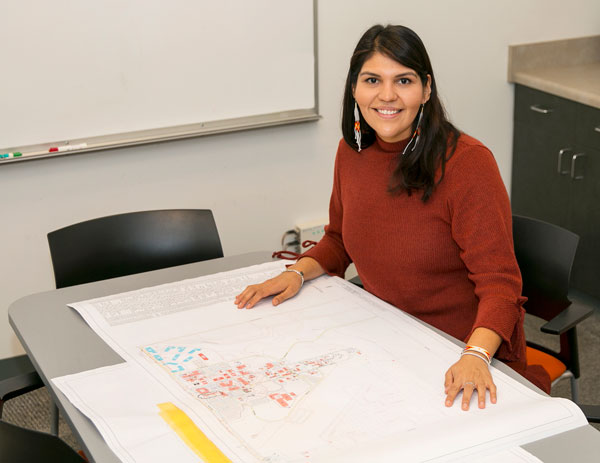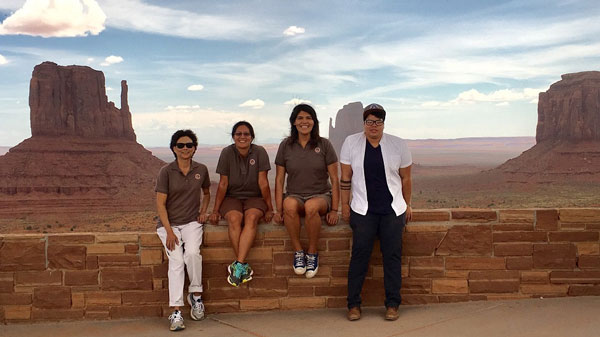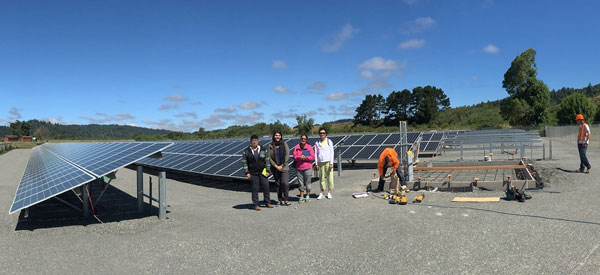Focusing on positive energy, recognizing opportunities, and remembering where I came from have been my guiding principles for as long as I can remember. As our country celebrates National Native American Heritage Month in November, I’d like to encourage everyone at Sandia to direct energy toward creating positive environments that make the world a better place.
As Sandians, we are fortunate to have groups that help promote diversity and inclusion. Sandia’s American Indian Outreach Committee does an outstanding job of

providing resources for anyone of Native American heritage. The committee shares ideas, plans events and encourages the participation of anyone interested in learning and connecting with Native American heritage.
Working closely with the American Indian Science and Engineering Society, the committee aims to increase the representation of Native Americans in STEM studies and careers.
No place like home
My ancestors were one of the 12 original families of the Yomba Shoshone Tribe to live on the Yomba Reservation in central Nevada. I always tell people that the reservation, which is located off the loneliest highway in the Reese River Valley, can be found only by those who know what they’re looking for. (Hint: The closest town is Austin.) There are roughly 150 members of the Yomba Shoshone Tribe, which is a federally recognized tribal government.
As I grew up in Sacramento, my family would make the most of our long trips to the reservation, bringing food, water and supplies to share with our relatives. I now visit the Yomba Reservation at least twice a year. I value the opportunity to connect with my tribe’s traditions and culture. I am interested in learning my tribe’s language and helping to keep it circulating for future generations.
I would be remiss if I did not also highlight my Hispanic heritage. My father is from El Salvador, and almost all of his family still live there. I appreciate the high value that Salvadorans place on family relationships. At the same time, the country’s extreme poverty and violence trouble me.
I sometimes feel caught between two worlds, which I think is common for people of mixed heritage. This feeling is accentuated during my visits to the Yomba Reservation, particularly when I experience “insider-outsider” dynamics since I didn’t grow up on the reservation.
Recognizing the amount of privilege in my life has been a great motivator, pushing me to take advantage of the opportunities that I’ve been given so that I can make my family proud. I have also leaned on my family for support to overcome challenges and help me move forward.
Sandia: A place to make a difference
After receiving a bachelor’s degree from Boston University and a master’s degree in urban planning from the Pratt Institute in Brooklyn, I wanted to give back to the people and community that have helped me along the way. In fact, I chose my field out of a desire to improve reservation life and encourage people to connect with their cultures.
While conducting my thesis research on renewable energy as an economic development driver for tribes, I was fortunate to be introduced to a Sandia internship program sponsored by DOE’s Office of Indian Energy Policy and Programs. Through the program, I met Sandia engineer Sandra Begay. Sandra became my mentor and together we would conduct energy planning sessions with tribes. These planning sessions assist tribal members in evaluating whether renewable energy project development is right for their tribe.

As part of my research, I explored whether solar energy was a feasible option for my tribe since the Yomba Reservation has open land drenched with sunlight. However, I learned there are many challenges before solar energy can be brought to a remote area, especially one without a utility infrastructure or planning department. Running lines is expensive and requires a commitment from a company to purchase the generated power. There were also cultural barriers to the idea of harvesting energy from the sun, and explaining solar technology to tribal members was difficult.
After graduation, I accepted Sandia’s offer to continue to work with Sandra as a year-round intern. A few months later, I jumped at the opportunity to be a strategic planner at Sandia/California and am happy to be closer to my family in Sacramento.
Full STEM ahead
A wide range of potential professions are available under the STEM umbrella. When highlighting STEM careers to young Native Americans and other minority-group members, I share my own experiences.
I then advise younger people to cultivate their curiosities and carve out their own niche by combining STEM with other disciplines. I also encourage them to reach out to people they admire to learn about different career journeys, while reminding students that there is no one “right” path.

In the future, I intend to work with Lawrence Livermore National Laboratory’s American Indian Activities Group to support Native American heritage, culture and tradition. I am also exploring opportunities with the Livermore Indian Center to help plan STEM afterschool activities for Native American youth.